On Thursday, October 2, a full-day symposium, entitled The Art of Japanese Books: Uses, Materials, and Block-Printing Techniques, took place in the Bonnie J. Sacerdote Lecture Hall (morning and afternoon session videos available). Approximately 120 professionals in the field of Japanese art, history, and conservation were in attendance, with half of these being Museum staff from various curatorial, library, and conservation departments.
The program of the symposium included five illustrated presentations by Museum staff and outside researchers. A selection of books from the Vershbow Collection were on display in the lecture hall for participants to enjoy. Ken Soehner, Arthur K. Watson Chief Librarian, and Mindell Dubansky, preservation librarian and symposium organizer, opened the program and introduced the following presentations.

Participants explore a selection of Vershbow collection books on view during the symposium
John Carpenter gave an animated talk about the importance of connoisseurship in understanding Japanese books and editions.
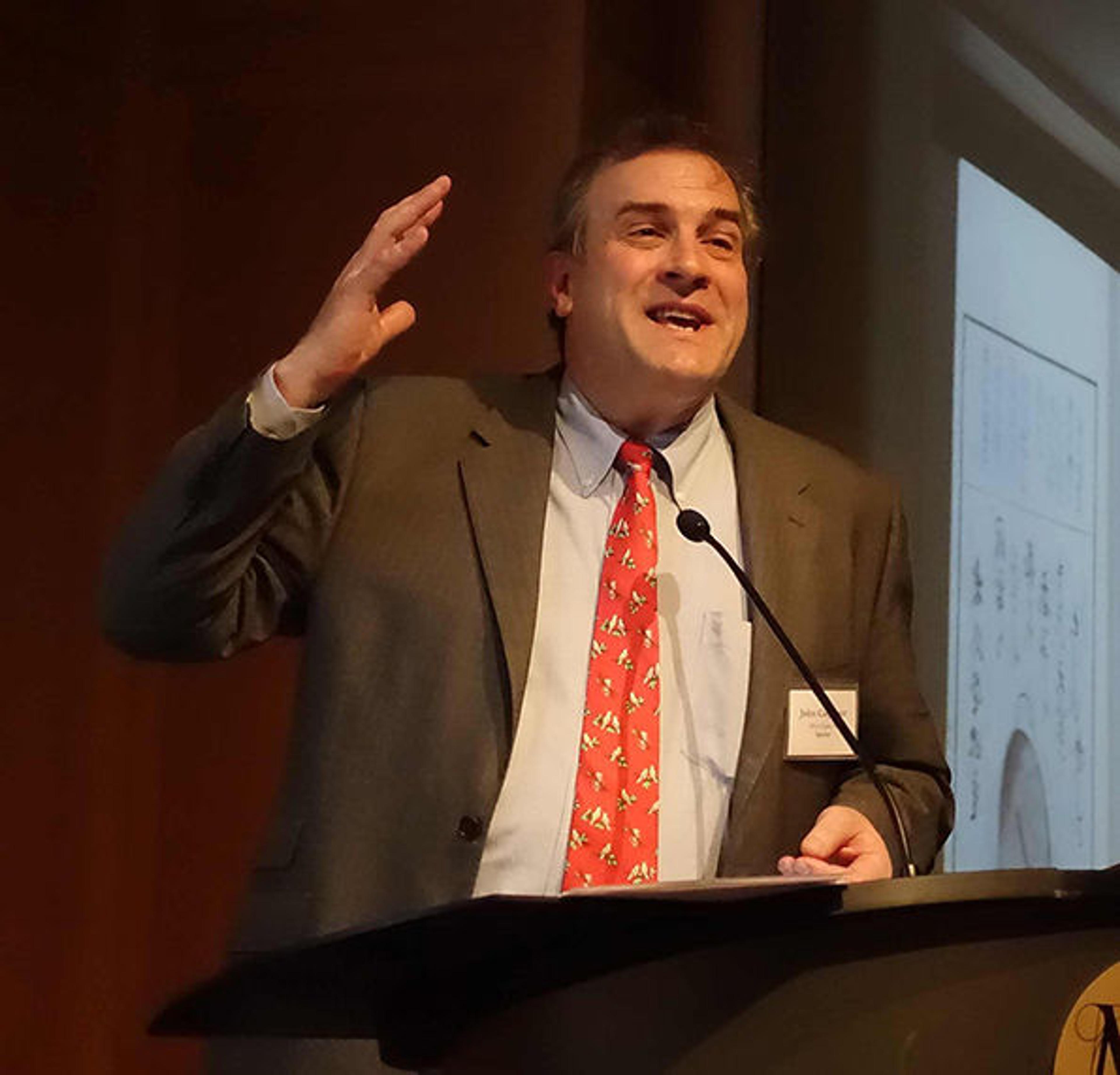
"Ehon Connoisseurship: The Vershbow Collection of Japanese Illustrated Books," presented by John T. Carpenter, curator of Japanese Art in the Museum's Department of Asian Art
Kazuko Hioki showed samples she brought to illustrate the distinctive characteristics of Edo period decorated bindings.

"Japanese Printed Books of the Edo Period," presented by Kazuko Hioki, conservation librarian at the University of Kentucky
Below is Kazuko Hioki's slide showing how a stone was used to create decorative burnished papers by rubbing over a textured wood block. Papers like these were commonly used in the Edo period for the visible part of book covers.
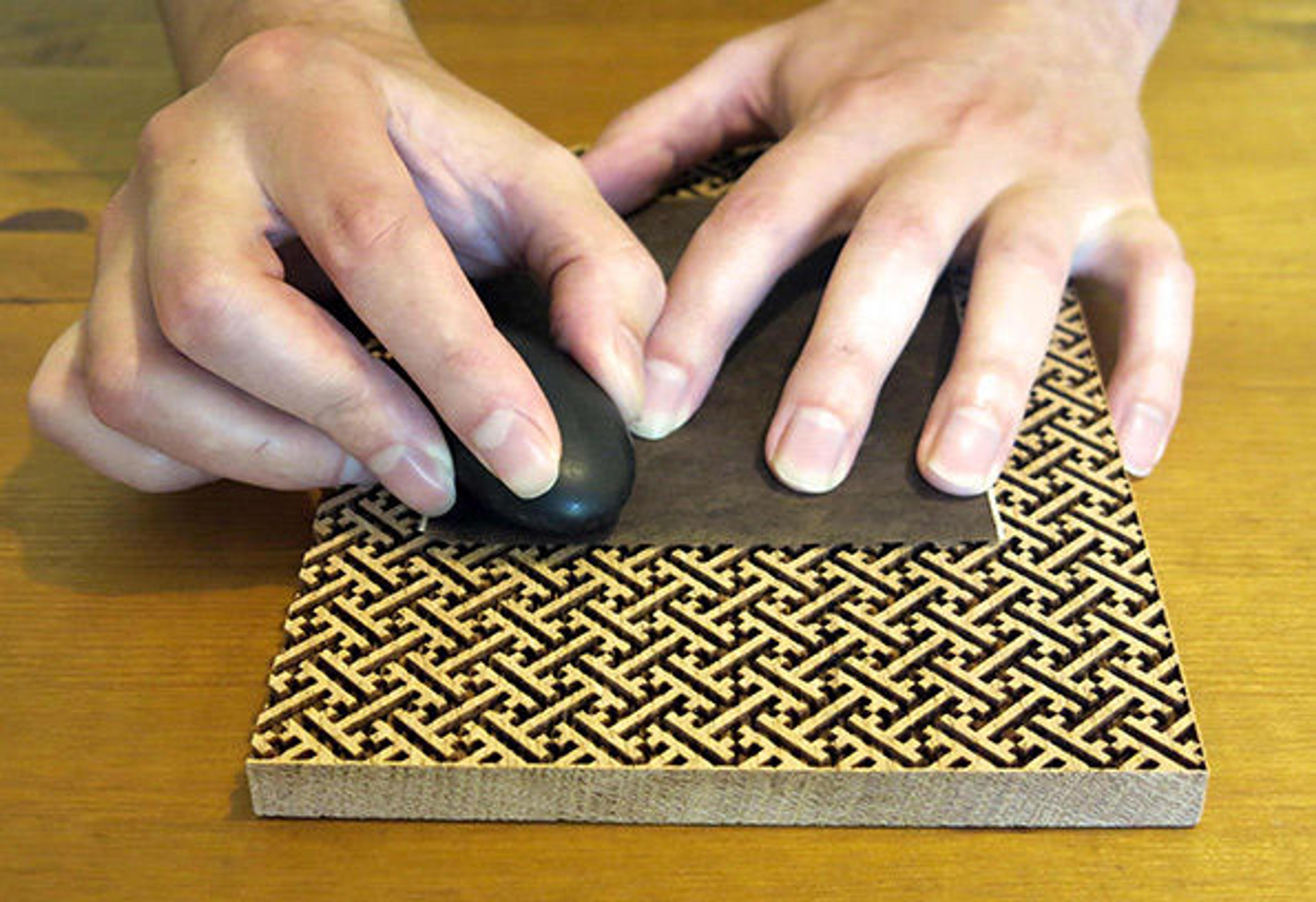
Anne Covell spoke about the processes involved in making recycled paper for the inner lining of Edo period book covers.
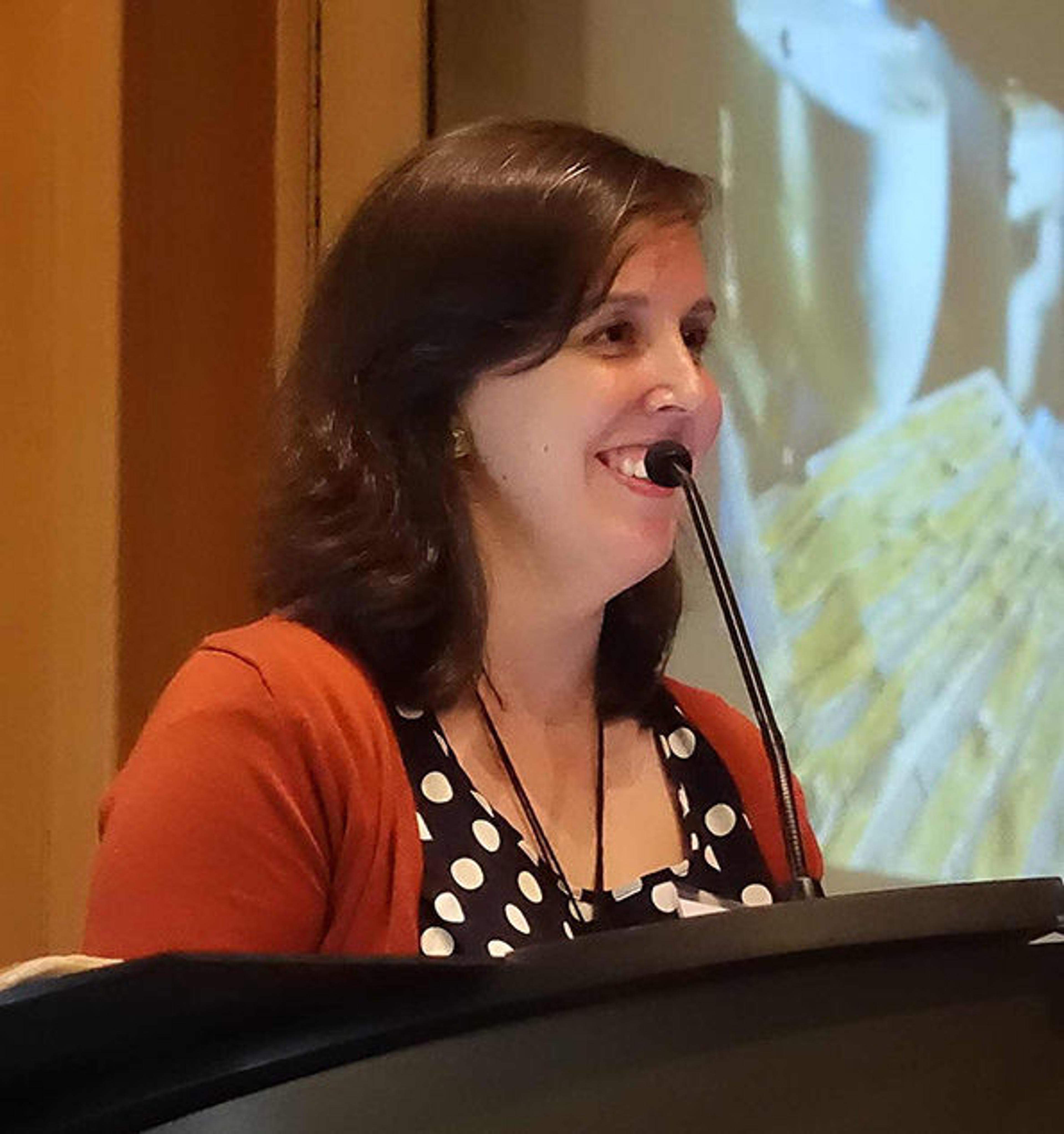
"Papermaking for Book Covers and Texts in Edo, Japan," presented by Anne Covell, an MFA candidate at the University of Iowa's Center for the Book
Below is Anne Covell's slide showing pounding and washing recycled printed waste. This type of paper was used throughout the Edo period to make the inner lining of book covers.

Jennifer Perry spoke about the manufacture and use of traditional Japanese colorants and printing techniques.

"Woodblock Printing in the Edo Period: Techniques and Materials," presented by Jennifer Perry, conservator in the Met's Department of Asian Art
Marco Leona discussed new research on the evolution of the uses and attributes of pigments and dyes throughout the Edo period.
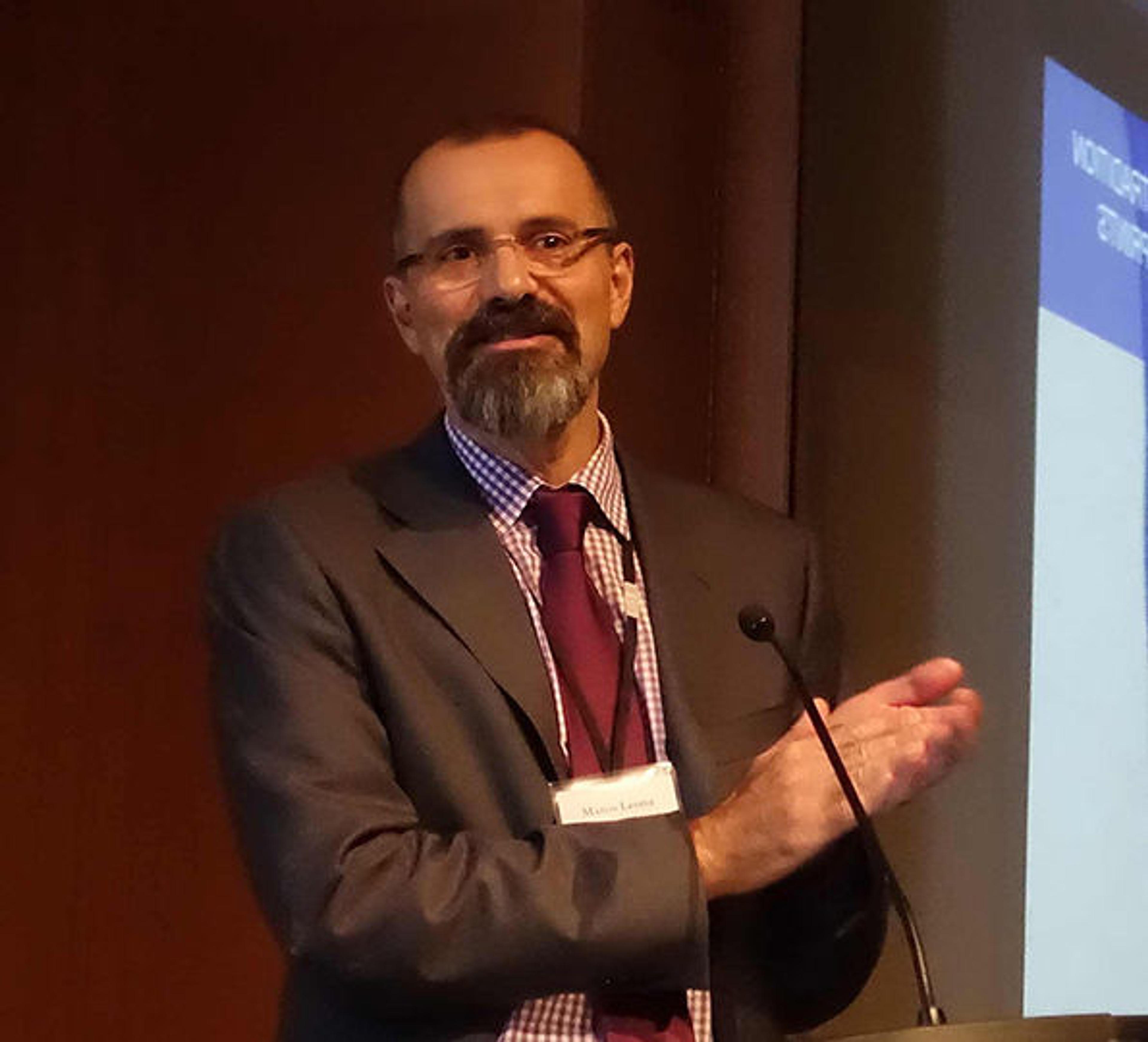
"Indigo, Prussian Blue and Aniline Dyes: Tradition and Innovation in Woodblock Prints," presented by Marco Leona, David H. Koch Scientist in Charge in the Met's Department of Scientific Research
Following the symposium, guests were invited to the Watson Library for a reception. There, library staff presented Watson's growing number of digitized resources related to the Museum's Japanese book collections. Watson now has over one hundred Japanese illustrated books in its Digital Collections, fully digitized and accessible here.
Recently, the entire Vershbow Collection was digitized (see this recent In Circulation post about the project) and is currently in the process of being made available to the public through the Museum website. The inaugural online volume from the Vershbow Collection, Mountains of the Heart (Kyōchūzan), 1816, by Kameda Bōsai (1752–1826), has been put online and is available here.
Workshop
On Friday, October 3, conservator Kazuko Hioki and papermaker Anne Covell taught an interactive workshop on making the typical Edo period sewn binding with burnished patterned covers. The participants were the fourteen staff members and interns of the Museum's Book and Paper Conservation Departments. The workshop included making sheets of recycled paper for the inner lining of the covers, experimenting with a variety of decorative paper techniques, binding a finished book, and using the burnished patterned covers that we made.

Making patterned paper with persimmon dye, using a trimmed brush for a textured effect
Participants made embossed paper by rolling a pasted laminate of plain and persimmon-dyed papers laid over a textured wood block. Anne had these blocks made for her using a laser cutting machine at the University of Iowa.
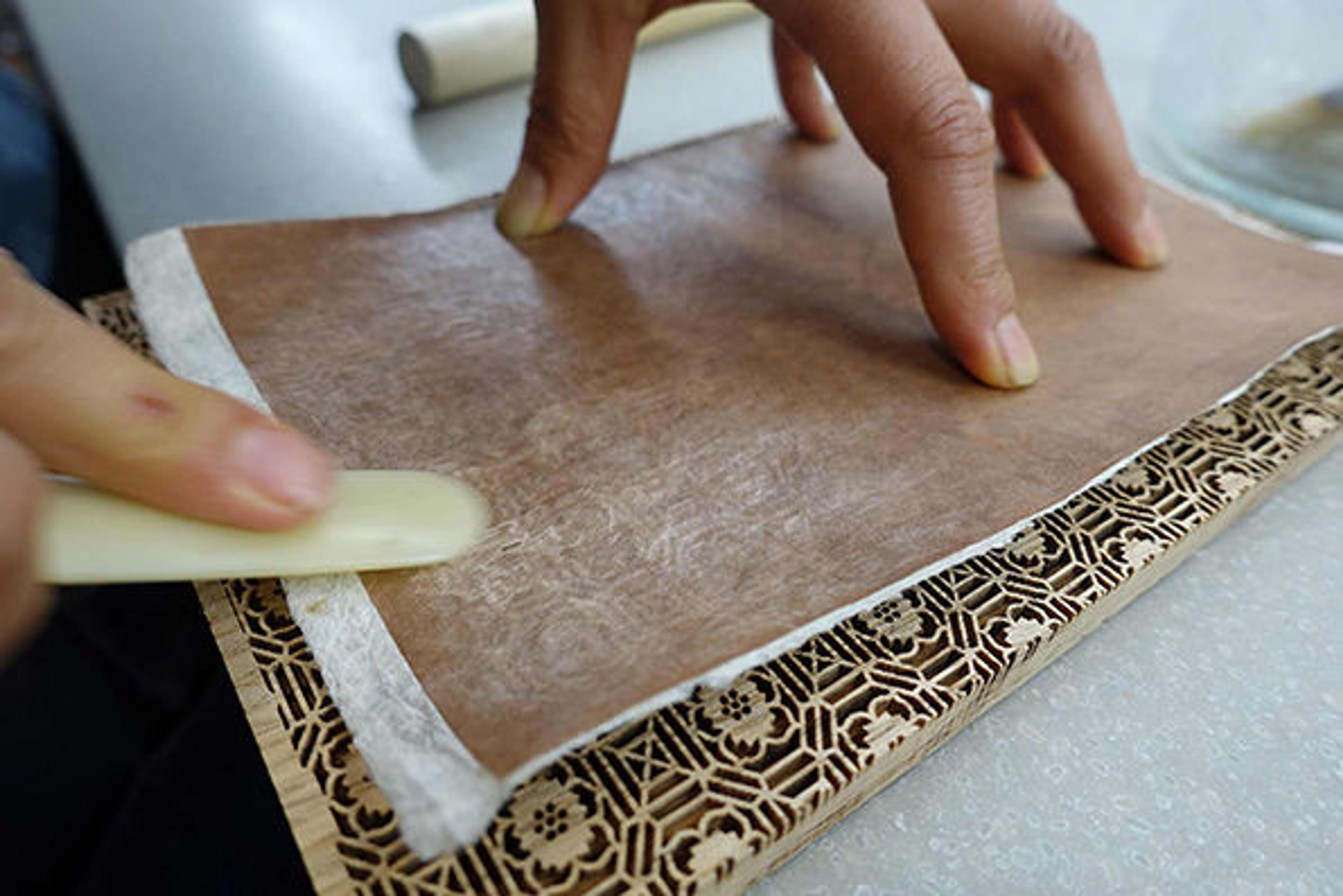
Participants made a set of burnished papers to bind their books. For burnishing, the papers were dry or slightly dampened.
These programs were developed and organized by Preservation Librarian Mindell Dubansky. The symposium program was put together with the collaboration of members from both Asian Art and Watson Library staff. In Asian Art, Jennifer Perry and John Carpenter participated in the selection of the symposium presentations, and Midori Oka selected and oversaw the Vershbow books on display. In Watson Library, Ken Soehner generously gave his support for funding this program. Karen Williams and Nancy Mandel provided administrative support. Yukari Hayashida and Sophia Kramer coordinated the workshop, Jenny Adolfson managed registration tasks, and Jae Carey managed the organization of rooms, coordinated guests, and photographed the event. Many thanks also go to the book-conservation volunteers who graciously helped in all ways.
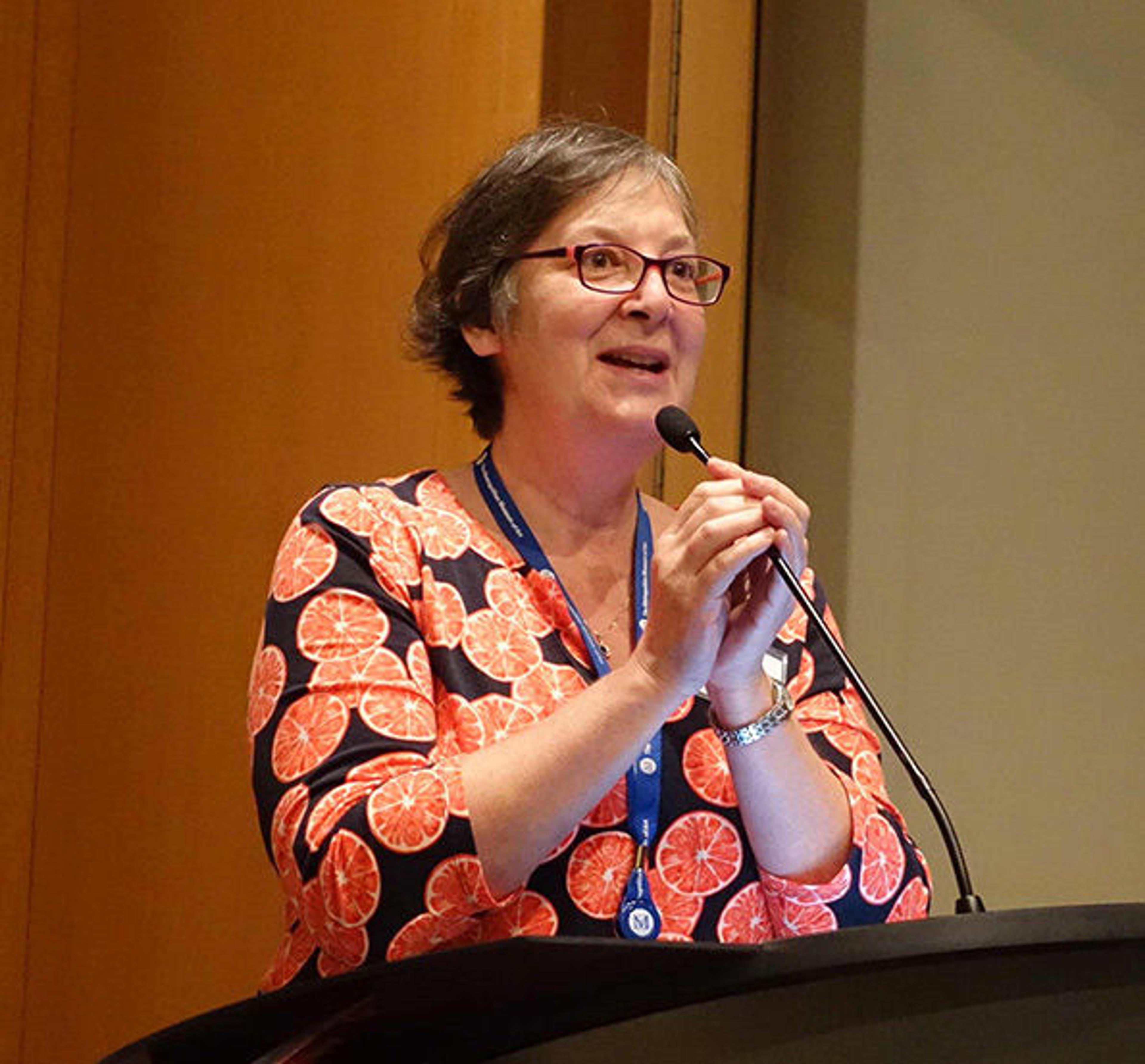
Mindell Dubansky, preservation librarian in the Sherman Fairchild Center for Book Conservation, Thomas J. Watson Library
